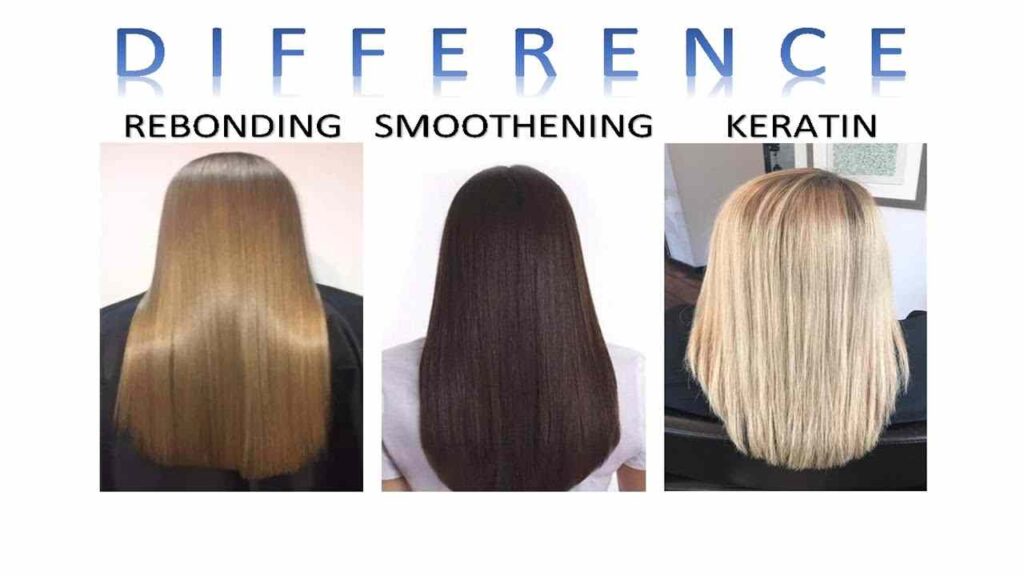
Discover Key 15 Difference between Keratin and Smoothing
Keratin and smoothing are popular hair treatments that aim to transform and enhance the texture of your locks. While both offer desirable results, they differ in their approach and outcomes. Let’s delve into the key 15 Difference between keratin and smoothing treatments and learn about this process in this article in simple language.
15 Difference between Keratin and Smoothing
Treatment Goals: Keratin treatments emphasise strengthening and repairing the hair, whereas smoothing treatments primarily target frizz control and straightening the hair.
Chemical Composition: To repair and strengthen the hair, keratin treatments use a protein called keratin, whereas smoothing treatments frequently use chemicals like formaldehyde or other aldehydes.
Application: Keratin treatments involve coating the hair with a keratin-infused solution before sealing it in with heat. Multiple steps are frequently needed for smoothing treatments, such as applying a smoothing solution, blow-drying, and flat-ironing.
Duration: Smoothing treatments may last six to eight weeks, whereas keratin treatments typically last up to three months.
Straightening Intensity: Straightening Intensity: Keratin treatments produce a more natural-looking straightened effect, whereas smoothing treatments produce a more dramatic and sleek straightened effect.
Waiting Period: After a keratin treatment, you should wait a few days before washing or styling your hair, whereas smoothing treatments may require up to 48 hours.
Compatibility: Keratin treatments are appropriate for almost all hair types, including chemically treated or damaged hair. Smoothing treatments are not advised for severely damaged hair or certain hair types.
Formaldehyde Concerns: Keratin treatments have evolved to reduce or eliminate formaldehyde content, addressing previously raised health concerns about high formaldehyde levels in some older formulas. Smoothing treatments may still contain formaldehyde or other aldehydes, which some people are sensitive to.
Hair Texture: Hair Texture: Keratin treatments can improve the texture and manageability of all hair types, whereas smoothing treatments focus on reducing frizz and straightening curly or wavy hair.
Maintenance: Keratin treatments require less upkeep, allowing you to wash and style your hair as usual. Smoothing treatments may necessitate the use of specific aftercare products as well as the avoidance of certain hair treatments in order to maintain results.
Cost: Because keratin treatments use higher-quality ingredients and produce longer-lasting results, they are generally more expensive than smoothing treatments.
Curl Retention: Keratin treatments help to retain the natural curl pattern of the hair, giving you more styling options. Smoothing treatments can temporarily relax the curls, making bouncy curls more difficult to achieve without additional styling.
Treatment Time: Keratin treatments typically take longer to apply and process, often lasting several hours, whereas smoothing treatments can be completed in one to two hours.
Side Effects: Keratin treatments have few side effects, the most common of which is temporary scalp irritation or sensitivity. Because of the chemical content, smoothing treatments can occasionally cause scalp irritation, eye discomfort, or allergic reactions.
Professional Application: Keratin treatments are commonly performed in salons by hairstylists due to their technical application process. Smoothing treatments can be performed by professionals or at home, depending on the product.
Understanding the difference between keratin and smoothing treatments is crucial in making an informed decision about which option suits your hair needs best. Whether you desire frizz-free, manageable locks or a straight, sleek look, knowing the difference allows you to achieve your desired hairstyle with confidence.
Also Read: Explore Key 15 Difference between Internal check and Internal control